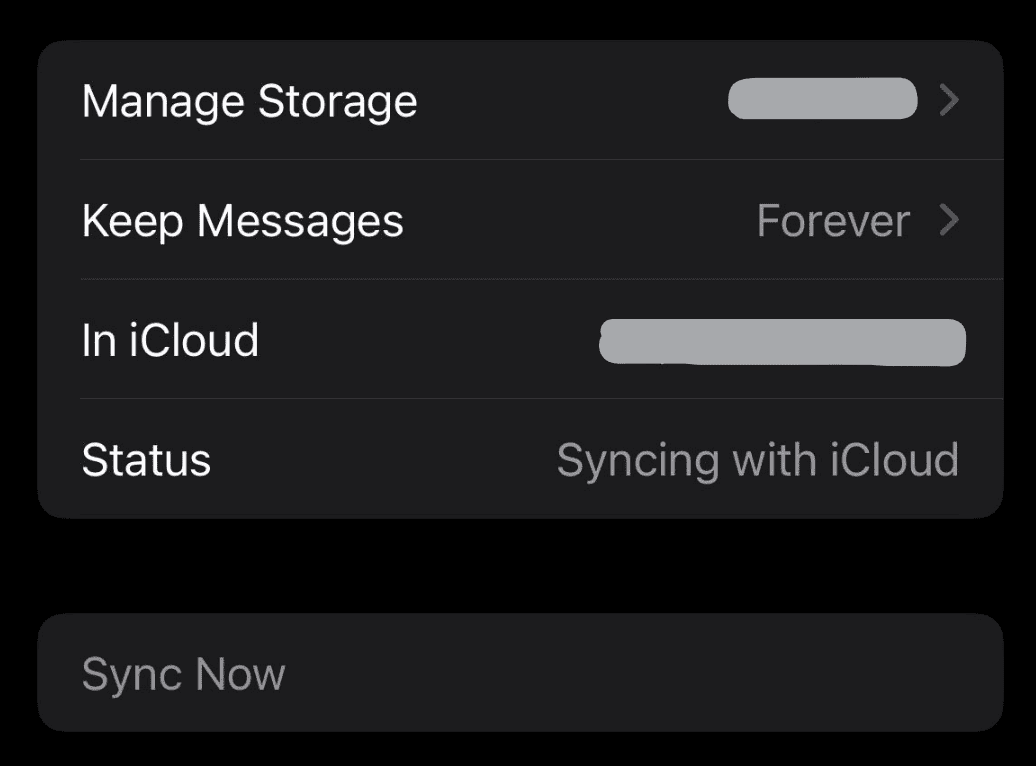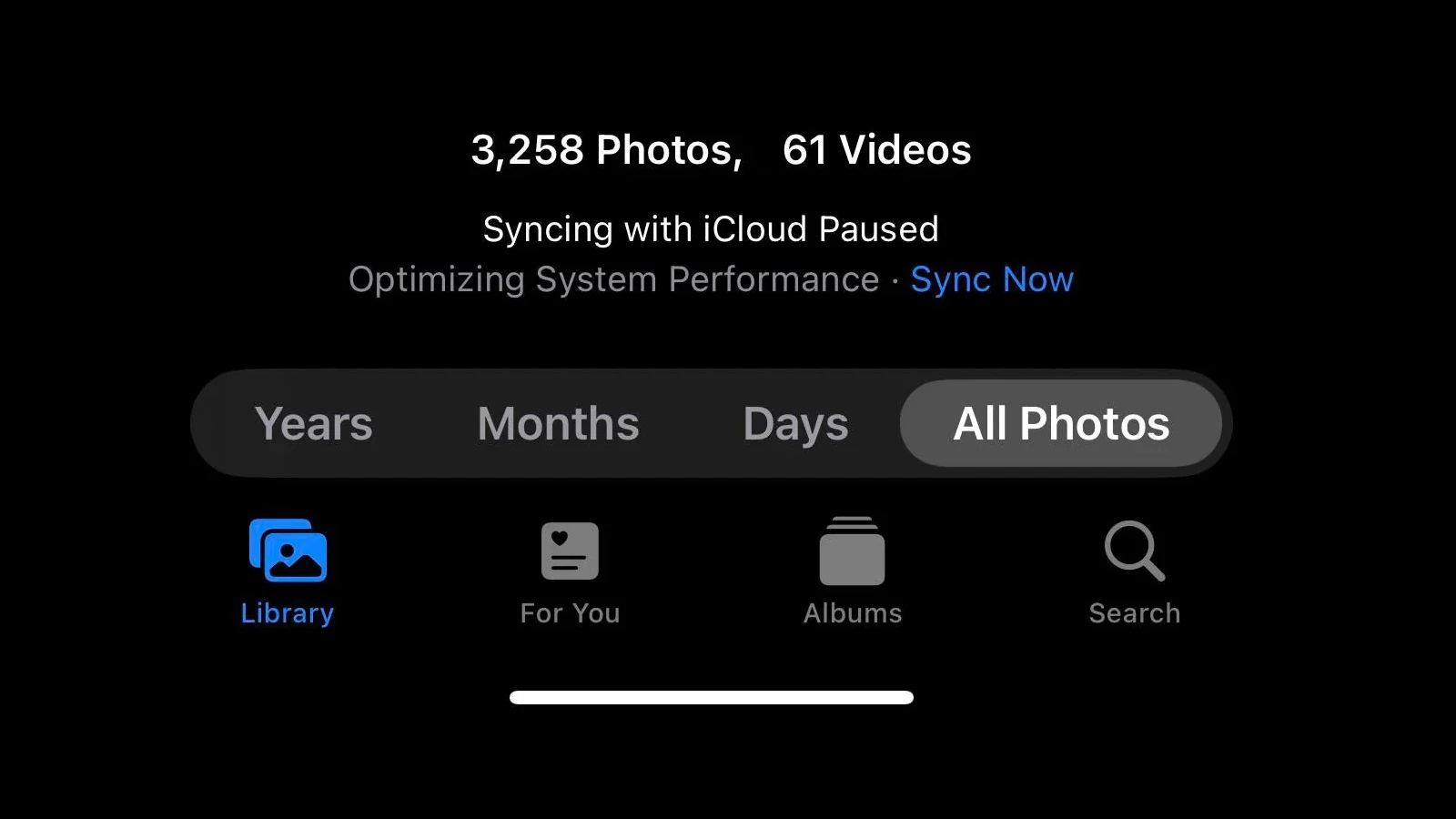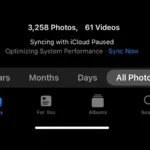When your iPhone shows “Syncing with iCloud Paused,” it means your device has stopped sending and receiving data from Apple’s cloud storage. This pause can happen due to many reasons, such as weak Wi-Fi, not enough iCloud storage, or issues with your Apple ID.
Fixing this problem is often simple. You might need to check your internet connection, free up some iCloud space, or sign out and back into your Apple ID. Sometimes, turning off iCloud sync for a few seconds and then turning it back on can solve the issue.
Keeping your data in sync is key for using your Apple devices smoothly. When syncing works well, you can access your photos, messages, and other data on all your Apple gadgets. This makes it easy to switch between devices without losing any important information.

Troubleshooting iCloud Sync
When you see the message “Syncing with iCloud Paused” on your Apple device, it signifies a temporary halt in the synchronization process between your device and iCloud. This interruption can prevent your data, such as photos, contacts, or documents, from being updated across all your connected devices.
Common Causes
Several factors can contribute to iCloud sync pausing:
- Network Connectivity Issues: A weak or unstable internet connection can disrupt the sync process.
- Insufficient iCloud Storage: If your iCloud storage is full or nearly full, there might not be enough space to upload new data, leading to a pause in syncing.
- Low Power Mode or Battery Issues: To conserve battery life, your device might pause iCloud sync when in Low Power Mode or when the battery is low.
- Software Glitches or Bugs: Temporary software issues or bugs can sometimes interfere with iCloud sync.
- Account or Settings Issues: Problems with your Apple ID, iCloud account settings, or two-factor authentication can also cause sync disruptions.
Troubleshooting Steps
If you encounter the “Syncing with iCloud Paused” message, here are some troubleshooting steps you can take:
- Check Your Internet Connection: Ensure you have a stable and reliable internet connection. Try switching between Wi-Fi and cellular data to see if that resolves the issue.
- Verify iCloud Storage: Go to Settings > [Your Name] > iCloud > Manage Storage to check your available iCloud storage. If it’s full or nearly full, consider upgrading your storage plan or deleting unnecessary files.
- Disable Low Power Mode: If Low Power Mode is enabled, disable it temporarily to see if that allows iCloud sync to resume.
- Restart Your Device: A simple restart can often fix minor software glitches that might be affecting iCloud sync.
- Check Apple System Status: Visit the Apple System Status page to see if there are any ongoing issues with iCloud services.
- Update Your Software: Make sure your device is running the latest version of iOS or macOS, as outdated software can sometimes lead to compatibility issues with iCloud sync.
- Sign Out and Back into iCloud: Go to Settings > [Your Name] > Sign Out, then sign back in with your Apple ID. This can help refresh your iCloud connection and resolve any account-related issues.
- Contact Apple Support: If none of the above steps work, contact Apple Support for further assistance. They can help diagnose the problem and provide specific solutions tailored to your situation.
| Issue | Solution |
|---|---|
| Network Connectivity | Check internet connection, switch between Wi-Fi and cellular data |
| Insufficient iCloud Storage | Upgrade storage plan or delete unnecessary files |
| Low Power Mode | Disable Low Power Mode temporarily |
| Software Glitches | Restart your device |
| Apple System Issues | Check Apple System Status page |
| Outdated Software | Update to the latest iOS or macOS version |
| Account Issues | Sign out and back into iCloud |
| Persistent Issues | Contact Apple Support |
Remember, the “Syncing with iCloud Paused” message usually indicates a temporary issue that can be resolved with some troubleshooting. By following these steps, you can get your iCloud sync back on track and ensure your data stays up-to-date across all your devices.

Key Takeaways
- Syncing paused means your device has stopped sharing data with iCloud
- Weak internet or low storage can cause syncing to pause
- Fixing sync issues often involves simple steps like checking settings or restarting your device
Understanding iCloud Syncing
iCloud syncing lets Apple devices share data across platforms. It keeps information up-to-date on all devices linked to an Apple ID.
How iCloud Syncing Works
iCloud syncing uses the internet to move data between devices. When you make changes on one device, they show up on others. This works for things like photos, contacts, and notes.
iCloud syncing happens in the background. You don’t need to do anything most of the time. It uses Wi-Fi or cellular data to send information.
Some apps let you choose what to sync. For example, you can pick which photo albums to share.
Common iCloud Syncing Issues
Syncing problems can happen for different reasons. A weak internet connection is a common cause. Your device needs a good signal to send data to iCloud.
Low battery can also stop syncing. iPhones and iPads may pause syncing to save power.
Sometimes, syncing pauses if there’s not enough iCloud storage. You might see a message about this.
Outdated software can cause issues too. It’s important to keep your devices updated.
Checking iCloud System Status
Apple’s servers need to work for iCloud to sync. You can check if there are any problems on Apple’s side.
Go to Apple’s System Status page. Look for any yellow or red dots next to iCloud services.
If you see issues, wait for Apple to fix them. Syncing should start again once the service is back up.
iCloud Storage Management
iCloud gives you 5GB of free storage. This fills up fast with photos and backups.
To check your storage, go to Settings > [Your Name] > iCloud. You’ll see how much space you’re using.
If you’re running low, you can buy more storage. Or, you can delete old backups and files you don’t need.
Some tips to save space:
- Turn off backup for apps you don’t need in iCloud
- Use other services for photo storage
- Delete old messages and attachments
Resolving Sync Pauses
When iCloud syncing pauses, there are several ways to fix the issue. These methods range from checking your network to adjusting settings on your device.
Network and Connectivity Solutions
A strong internet connection is key for iCloud syncing. Check your Wi-Fi or cellular data connection. If it’s weak, move closer to your router or switch to a different network.
Try these steps:
- Turn off Wi-Fi and turn it back on
- Reset network settings (Settings > General > Transfer or Reset iPhone > Reset > Reset Network Settings)
- Update iOS to the latest version
If you’re using cellular data, make sure Low Data Mode is off. Go to Settings > Cellular > Cellular Data Options > Data Mode. Choose Standard or Allow More Data on 5G.
Device and Account Settings Adjustments
Sometimes, your device or Apple account settings can cause sync issues. Here are some fixes:
- Restart your iPhone
- Sign out of iCloud and sign back in
- Toggle off “Sync this iPhone” for problematic apps, wait 10 seconds, then turn it back on
To toggle sync:
- Go to Settings > [your name] > iCloud
- Tap Show All
- Find the app (e.g. Messages or Photos)
- Turn off “Sync this iPhone”
- Wait 10 seconds
- Turn “Sync this iPhone” back on
Optimizing iCloud Feature Settings
Each iCloud feature has its own settings. Tweaking these can often solve sync issues.
For iCloud Messages:
- Go to Settings > [your name] > iCloud
- Tap Show All
- Find Messages
- Turn off “Sync this iPhone”
- Wait 20 seconds
- Turn “Sync this iPhone” back on
For iCloud Photos:
- Open the Photos app
- Tap the Photos tab
- Scroll to the bottom
- Check if it’s still uploading
If it’s stuck, turn iCloud Photos off and on in Settings > [your name] > iCloud > Photos.
Dealing with Insufficient Storage
If you’re out of iCloud storage, syncing will pause. Here’s how to fix it:
- Check your storage: Settings > [your name] > iCloud > Manage Storage
- Delete unused backups or app data
- Remove old photos or videos
- Upgrade your iCloud storage plan if needed
You can also turn off sync for apps you don’t need in the cloud. This frees up space for important data.
Maintaining iCloud Sync Health
Keeping your iCloud sync running smoothly requires regular care. This involves updating software, checking device health, managing your account, and following good sync habits.
Regular Software Updates
Updating your device’s software is key for smooth iCloud syncing. New updates often fix bugs that can cause sync problems. To update iOS:
- Go to Settings > General > Software Update
- If an update is available, tap “Download and Install”
- Keep your device plugged in and connected to Wi-Fi during the update
Set up automatic updates to stay current:
- Go to Settings > General > Software Update
- Tap “Automatic Updates”
- Turn on “Download iOS Updates” and “Install iOS Updates”
This ensures you always have the latest fixes for sync issues.
Monitoring Device Health
Your device’s health affects iCloud sync. Low battery or storage can pause syncing. To check battery health:
- Go to Settings > Battery > Battery Health
- Look at the “Maximum Capacity” percentage
If it’s below 80%, consider a battery replacement.
For storage:
- Go to Settings > General > iPhone Storage
- Delete unused apps or old files to free up space
Restart your device weekly to clear temporary issues:
- Hold the power button and volume down button
- Slide to power off, then turn it back on after 30 seconds
iCloud Account Maintenance
A well-managed iCloud account helps prevent sync problems. Check your storage:
- Go to Settings > [your name] > iCloud
- Tap “Manage Storage”
If you’re near the limit, buy more storage or remove old backups.
Review which apps use iCloud:
- Go to Settings > [your name] > iCloud
- Scroll down to see all apps
- Turn off syncing for apps you don’t need
Sign out and back into iCloud if sync issues persist:
- Go to Settings > [your name]
- Scroll down and tap “Sign Out”
- Restart your device
- Sign back in with your Apple ID
Best Practices for iCloud Syncing
Follow these tips for better iCloud sync:
- Keep Wi-Fi on when possible for faster syncing
- Charge your device regularly to avoid low battery sync pauses
- Open problematic apps to trigger a manual sync
- Check that date and time settings are correct
- Use “Sync Now” in iCloud settings for a quick sync
- Don’t force close apps often, as this can interrupt background syncing
- Be patient – large files or many changes can take time to sync
If sync is still paused, try these steps:
- Turn off iCloud sync for the problem app
- Wait 30 seconds
- Turn it back on
- Tap “Sync Now” if available







